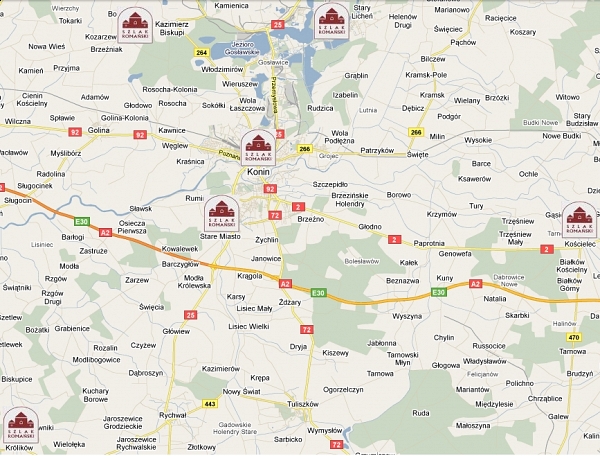Main siteAttractionsThe trail of Romanesque buildings
The trail of Romanesque buildings
The Konin region is a place where many traces of Romanesque culture have been preserved. Undoubtedly, in the first place among this category of monuments, one should mention the Roman road pole from 1151 year. On the oldest road sign in Poland, there is an inscription, which states that it marks half the road between Kalisz and Kruszwica. The importance of the Konin pole is evidenced by the fact that it was placed in the album "Polish architecture up to the nineteenth century" in the first place among monuments in Poland. In addition, two milestones should be mentioned, made in the form of monolithic sandstone crosses. The first of them can be found in the chapel on the market in the village of Licheń Stary. The next one was built in the northern slope of the Konin parish church. Another important Roman monument is the church. St. Martin in Kazimierz Biskupi. The temple was built at the turn of the twelfth and thirteenth century, the Romanesque apse and part of the nave in the sixteenth century was further added a Gothic part. The church has also preserved baptismal fonts. When writing about the monuments of Romanesque culture on the Konin Land, it is worth mentioning the perfectly preserved, made of bare sandstone, a 13th-century church in the Old Town near Konin. In the second half of the nineteenth century, the tower was pulled down from the west and a neo-gothic church was added. An interesting fact here is the occurrence of early Gothic features in late Romanesque architecture: and so in the presbytery wall there is an ogival window made in a typical Romanesque stone, not in Gothic brick. Also in the arc of the rainbow there are already gothic ornaments. Interesting elements are also the tympanum sculptures (heads on the cane portal), as well as the Romanesque font. In the northern wall of the neo-Gothic church a Romanesque tombstone was built (without a date and inscription). Similar gravestones, which are high-ranking monuments, can be found in Królików in the churchyard cemetery. The last Roman monument in our region is the church located on the high bank of the Kielce River. The temple was erected in the first half of the 12th century. A rectangular presbytery is adjoined on the east by a semicircular apse, in which there are two Romanesque windows.










